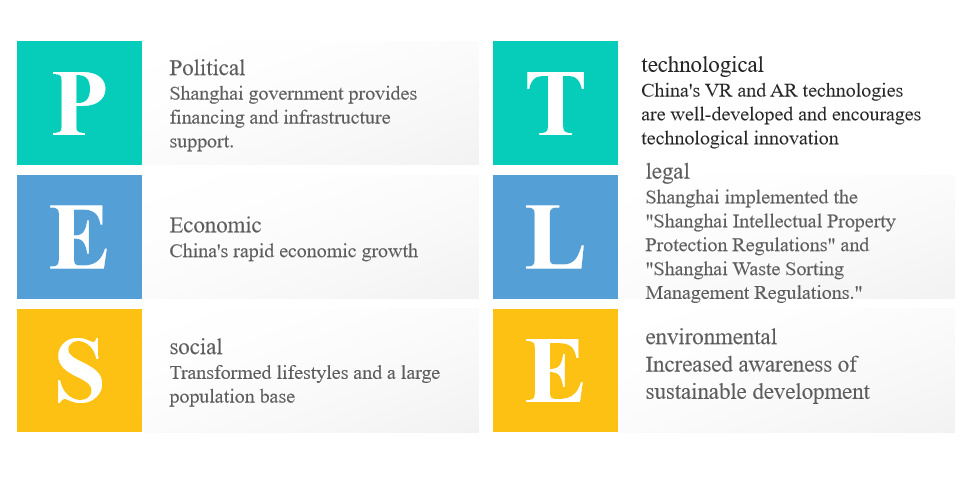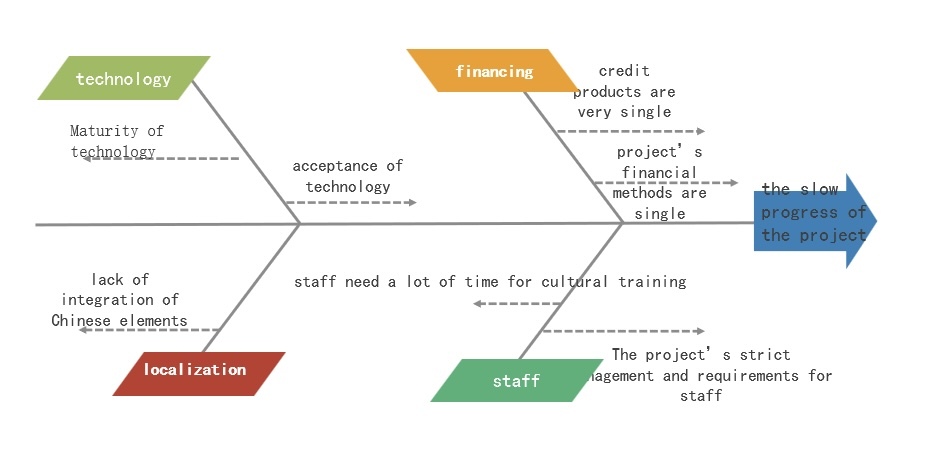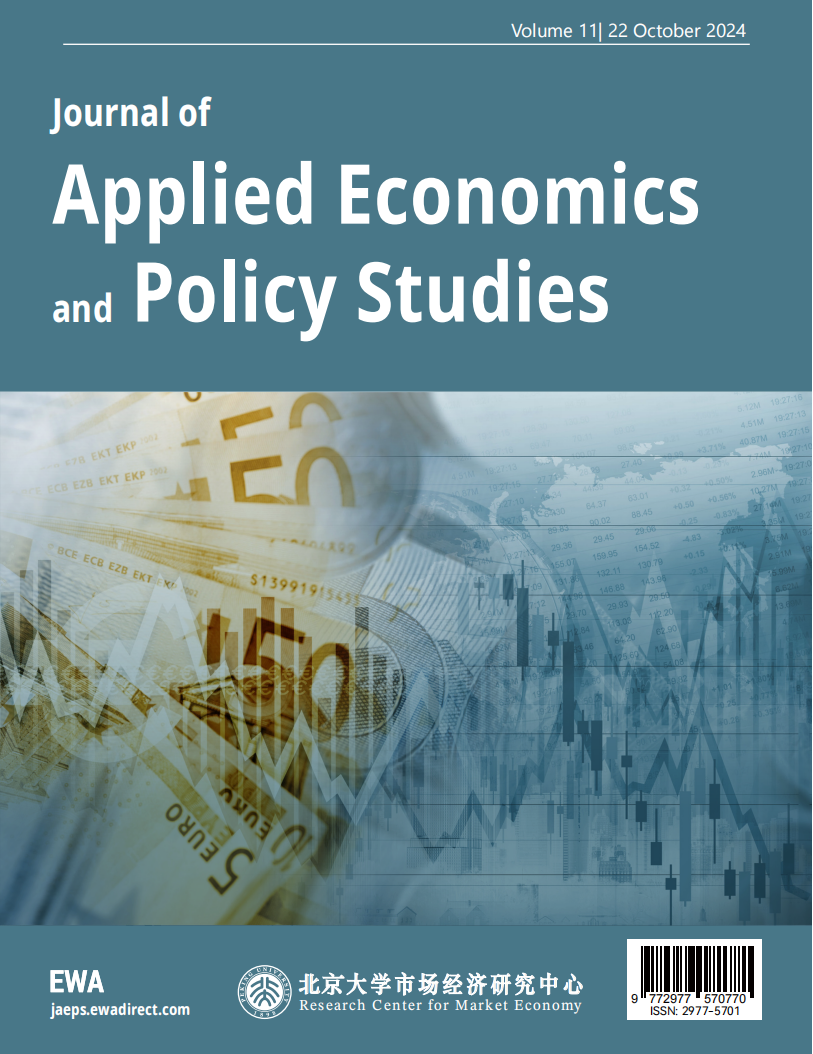1 Introduction
Shanghai Disneyland began construction on 8 April 2011, started trial operations on 7 May 2016, and officially opened on 16 June 2016 at 12:00 pm. The Park now has eight themed parks, 30 amusement rides, and 20 entertainment shows. Shanghai Disneyland is the sixth in the world, the third in Asia, and the first in mainland China. In terms of the size of a single park, Shanghai Disneyland is the largest of all Disneyland parks in the world [1]. On its fifth anniversary in 2021, Shanghai Disneyland announced a set of data: the park has received more than 83 million visitors in five years, achieved tourism revenue of more than 40 billion yuan, and realized tax revenue of about 2.6 billion yuan. In other words, Shanghai Disneyland's average annual revenue is more than 8 billion yuan, which makes it the world's most profitable theme park [2].
According to the Iron Triangle judge, the Shanghai Disney project has a construction period of 5 years and high input costs. The initial cost budget was nearly 30 billion yuan [3]. But Shanghai Disney has good quality and enormous scope. Besides, it directly stimulates the related industries and the neighboring economy. It promotes the development of cultural industry and tourism. It will help create employment opportunities for Shanghai and the surrounding areas. So, it is obvious that Shanghai Disney is a successful project.
Shanghai Disney is a successful project because the project management team comprehensively analyses the external environment around the Disney project and accurately identifies the strengths and weaknesses, opportunities, and threats of the project to assess and plan it, ensuring that the project is successfully initiated and carried out. In addition, timely and accurate identification of project management’s root problems. For example, the project’s financing problem and localization problem.
2 Main body
2.1 Analysis the environment around the project using PESTLE

Figure 1. PESTLE Analysis Results of Shanghai Disney
P: Shanghai Disney has a strong partnership with the Shanghai Municipal Government. The Shanghai government has provided financing and infrastructure support [4].
E: China's rapid economic growth, rising resident incomes, and consumption levels provide a broad market for Shanghai Disney.
S: People are beginning to enjoy leisure lifestyles, increasing demand for entertainment activities. Moreover, China has a large population base, with a high proportion of children and teenagers. These increase the consumer base of Shanghai Disney.
T: China's technological level is well-developed, with mature AR and VR technologies. China also encourages and supports technological innovation. These provide technical support for Shanghai Disney and enhance the customer experience [5].
L:Enhanced protection of intellectual property rights benefits the development of Shanghai Disney. For example, Shanghai implemented the "Shanghai Intellectual Property Protection Regulations" on March 1st, 2021, to protect Disney's trademarks, film, and product patents from infringement [6]. Besides, In June 2019, Shanghai started implementing "Shanghai Waste Sorting Management Regulations." Shanghai Disney has set up a variety of sorting bins in all corners of the park for tourists and staff to sort and put out waste, which not only has been a significant improvement in waste recycling but also complies with the regulations and improves the corporate image [7].
E: With the growing awareness of sustainable development, Shanghai Disney is facing increasing pressure and public expectations. Shanghai Disney can improve its use of renewable energy as part of its corporate social responsibility (CSR), Enhancing its corporate image and reputation.
2.2 Analyse the competition position of project using SWOT

Figure 2. SWOT Analysis Results of Shanghai Disney
2.2.1 Strength
For a theme park, Disney already has a good brand image and reputation and has cultivated a group of loyal customers worldwide by using its brand influence for all-round advertising, e.g., animation, film, news media, and other channels. These customers will be the main contributors to benefits [8].
Shanghai Disney focuses on cultural training for its staff so that they fully understand Disney's history, culture and language. Provide high-quality services for customers to have an immersive experience. Besides, the theme park enhances detailed management, requiring every staff to be warm, sincere, and polite [8]. For example, "actors" will actively and warmly greet visitors by imitating Mickey Mouse's classic actions and should crouch down when chatting with children.
Disney is located in Shanghai, which is a well-developed transportation with a wide range of transport options for visitors. And a Disney Metro line has been established, allowing tourists to reach the Disney Park directly from the airport, enhancing the convenience of tourists and reducing their travelling time [4]. Moreover, the region has a rich historical and cultural heritage and a solid cultural inclusiveness, which can effectively absorb foreign cultures, all of which provide convenient conditions for the development of Shanghai Disneyland [4].
2.2.2 Opportunities
The Shanghai Government has given a lot of support to the construction of Shanghai Disneyland. For example, build related transport, catering, and other supporting facilities and introduce a series of loan preferential policies. The repayment period of the whole project is as long as 20 years, and a preferential loan interest rate of 10% below the benchmark interest rate can be obtained, which provides financial support for the completion of the park [4]
China's economy is growing rapidly, and Shanghai Disney is located in the Yangtze River Delta region, an economically developed part of China, where residents have a high level of consumption and a high demand for leisure products. This has created the foundation for Disney's attendance. In addition, the population base of China is large. Children, teenagers, and young adults make up a large percentage of the population, providing a large market for the park.
2.2.3 Weakness
Disney Theme Park, as a foreign brand in China, has a strong American culture and conveys American values and concepts. To a certain extent, it has impacted the local culture. Therefore, it is a big challenge for Shanghai Disney to integrate local culture and establish a park with unique local characteristics. For example, Paris Disney did not make localized changes at the beginning, which led to a culture clash becoming a significant problem; even the French president refused to visit Disney [9].
Shanghai Disney has a long payback period. The investment cost is nearly 40 billion yuan, and one-third of the project needs to be renewed and maintained every year. The high maintenance cost and various operating costs make it difficult to achieve profitability in the short term [8].
2.2.4 Threats
Shanghai Disney's threats come mainly from Hong Kong Disneyland and Tokyo Disney. In terms of geographic location, the three theme parks are too close to each other to be in a direct competition relationship. Hong Kong Disneyland and Tokyo Disneyland are able to take away some of the customers by lower ticket prices. But in comparison, Shanghai Disney has unique competitive advantages so will not form a strong impact on the Shanghai Disney [10].
2.3 Analyse the slow progress of the project using the Fishbone Diagram

Figure 3. Fishbone Diagram of Delays in Shanghai Disney
2.3.1 Technology
As a modern theme park, Shanghai Disney requires a lot of sophisticated technology to provide an immersive experience for its customers. For example, the "Tron Light Wheel" project combines music, lights, and 3D images. Visitors are synchronized with the light wheel to meet the challenge of the future world. At the same time, over-reliance on technology may affect the customer experience, and it is necessary to consider the customer's acceptance of technology. VR virtual reality technology or AR augmented reality technology increases tourists' alertness and reduces their interaction and participation in the park. In a highly tense state, customers may not be able to achieve the effect of relaxation [11].
2.3.2 Financing
There is a big problem with the financing of Shanghai Disney. The financing budget problem is the main reason for the slow progress of the project. First of all, the financing model of Shanghai Disney mainly relies on bank credit and lacks equity financing in the construction, development, and operation. The choice of financing model is relatively conservative. Therefore, Shanghai Disney should enrich financing models such as bond financing and equity financing to expand the scale of direct financing [12]. At the same time, venture capital funds, private equity funds, and other social capital should be encouraged to participate fully in financing the initial construction of the theme park. This will not only solve the financing problem of Shanghai Disney but also enable venture capital organizations to predict and evaluate the development prospects and value of Shanghai Disney, which will provide suggestions for the managers of Shanghai Disney. Secondly, according to the public disclosure information of bank credit in Shanghai Disney, the credit products are very single and lack diversification. Therefore, Shanghai Disney should choose a variety of credit products such as supply chain financing, receivable financing, and rights income mortgage for Shanghai Disney's copyrights, patents, and so on [12].
2.3.3 Localization
Localization is an essential way for foreign brands to develop. However, for Shanghai Disney, there is a lack of integration of Chinese elements. To retain its visitors permanently, Shanghai Disney must fully integrate local elements. Not only does it need to enhance its external decorations, but it also needs to increase its understanding of Chinese culture and customs. Therefore, Shanghai Disney needs to integrate local elements from five aspects: cartoon image, amusement project, catering type, building appearance, and tourist products, so that the theme park has unique Chinese characteristics and a sense of local familiarity, which enhances the adaptability of tourists and reduces cultural conflicts. For example, the cartoon image introduces Chinese elements. There are few local Chinese characters in Disney, and most tourists love Mickey Mouse, Pooh Bear, and so on. With the release of the Disney film "Mulan," people strongly react to this. As a well-known character in China, Hua Mulan is a brave and strong woman who fully embodies the traditional virtues of China and represents China's culture. So, she should be highlighted in Shanghai Disney. For example, in the "float parade" event, Hua Mulan can be the protagonist and interact with visitors to enhance their experience [13].
2.3.4 Staff
Shanghai Disney's goal is to create happiness for its visitors. To meticulously serve its customers and give them a better experience, Shanghai Disney focuses on managing and training its staff. Strict requirements and management are according to the employee manual, while spending a lot of time on the cultural training of staff. For example, each "actor" will make their own cartoon character's unique movements [13].
3 Conclusion
Through analyzing the Shanghai Disney project, I have learned how to understand and plan the project comprehensively, and by analyzing the external environment and strengths, weaknesses, opportunities, and threats of the project, I can better evaluate the competition position and Potential risks of the project to make decisions and strategic adjustments. In addition, I learned how to deal with project financing problems and localization issues to make project management better. This is a good foundation for future project management practices.
Besides, I learned and utilized three tools: PESTLE, SWOT, and Fishbond Diagram. PESTLE is a strategic planning tool used to assess the impact of political, economic, social, technological, environmental, and legal external factors on a project [14]. SWOT is a tool that lists the main internal strengths and weaknesses and external opportunities and threats that are closely related to a project and then analyses them systematically to reach a series of conclusions. Using this method, I can conduct a comprehensive, systematic, and accurate analysis of the project's situation to formulate appropriate strategies, plans, and responses [15]. The Fishbone Diagram is an analytical tool. Using the pattern of a fish's skeleton shows the impacts and the causes that contribute to those impacts in a clear and easy-to-understand way. Using a structured approach helped me identify the project's root causes to improve and adjust the project [16].
References
[1]. Jessi. (2024). How many Disney parks are there? A complete guide to Disney resorts around the world. WDW Magazine. https://www-wdw--magazine-com.translate.goog/how-many-disney-properties-are-there-anyway/?_x_tr_sl=en&_x_tr_tl=zh-CN&_x_tr_hl=zh-CN&_x_tr_pto=sc
[2]. David. (2017). Shanghai resort boosts Disney’s balance sheet. InterPark. https://interpark-co-uk.translate.goog/shanghai-resort-boosts-disneys-balance-sheet/?_x_tr_sl=en&_x_tr_tl=zh-CN&_x_tr_hl=zh-CN&_x_tr_pto=sc
[3]. Rapoza, K. (2013). Shanghai Disney to open 2015. Forbes. https://www-forbes-com.translate.goog/sites/kenrapoza/2013/03/08/shanghai-disney-to-open-2015/?_x_tr_sl=en&_x_tr_tl=zh-CN&_x_tr_hl=zh-CN&_x_tr_pto=sc&sh=4834eb615ffc&_x_tr_hist=true
[4]. Zhang, Z. Y. (2022). Investing in Shanghai: Industry, economics, and policy. China Briefing News. https://www-china--briefing-com.translate.goog/news/investing-in-shanghai-china-city-spotlight/?_x_tr_sl=en&_x_tr_tl=zh-CN&_x_tr_hl=zh-CN&_x_tr_pto=sc
[5]. Fink, C. (2017). VR/AR in China: An emerging giant? Forbes. https://www-forbes-com.translate.goog/sites/charliefink/2017/12/19/vrar-in-china-an-emerging-giant/?_x_tr_sl=en&_x_tr_tl=zh-CN&_x_tr_hl=zh-CN&_x_tr_pto=sc&sh=7a0f520672ea&_x_tr_hist=true
[6]. Shanghai Intellectual Property Administration. (2021). Shanghai Intellectual Property Administration. Shanghai.gov.cn. https://www.shanghai.gov.cn/nw46991/20230718/9c6a40beaf174db390570ad39e5b973c.html
[7]. Shanghai.gov.cn. (2022). Regulations of Shanghai Municipality on Environmental Protection. https://www.shanghai.gov.cn/nw48050/20221117/72c9c954ffe54a82906c5c2cb70d9df7.html
[8]. Pereira, D. (2023). Disney SWOT analysis (2024). Business Model Analyst. https://businessmodelanalyst-com.translate.goog/disney-swot-analysis/?_x_tr_sl=en&_x_tr_tl=zh-CN&_x_tr_hl=zh-CN&_x_tr_pto=sc
[9]. Ngala, J. (2023). How lack of attention to cultural differences failed a magic company. LinkedIn. https://www.linkedin.com/pulse/when-rome-do-romans-joshua-ngala
[10]. Tan, Y. (2016). China’s two Disneylands: Competitors or complementary attractions? South China Morning Post. https://www-scmp-com.translate.goog/news/hong-kong/economy/article/1907607/chinas-two-disneylands-competitors-or-complementary?_x_tr_sl=en&_x_tr_tl=zh-CN&_x_tr_hl=zh-CN&_x_tr_pto=sc&_x_tr_hist=true
[11]. Jia, C. (2018). Virtual reality technology and customer delight in theme parks: The role of experience quality (Electronic Theses and Dissertations). https://stars.library.ucf.edu/etd/6242/
[12]. Bolton, P., & Freixas, X. (2000). Equity, bonds, and bank debt: Capital structure and financial market equilibrium under asymmetric information. Journal of Political Economy, 108(2), 324–351. https://doi.org/10.1086/262121
[13]. Pan, S. (2022). Analyses of Shanghai Disneyland IP localization strategy and its risks from the perspective of Lina Bell - Based on SWOT analysis method. [Unpublished master's thesis].
[14]. Rasto, N. (2016). PESTLE technique – A tool to identify external risks in construction projects. International Research Journal of Engineering and Technology, 03(01).
[15]. Kenton, W. (2023). SWOT analysis: How to with table and example. Investopedia. https://www.investopedia.com/terms/s/swot.asp
[16]. Ciocoiu, C. N. (2010). Application of fishbone diagram to determine the risk of an event with multiple causes. ResearchGate. https://www.researchgate.net/publication/46567642_Application_Of_Fishbone_Diagram_To_Determine_The_Risk_Of_An_Event_With_Multiple_Causes
Cite this article
Li,J. (2024). Project management analysis-based on Shanghai Disney. Journal of Applied Economics and Policy Studies,11,49-54.
Data availability
The datasets used and/or analyzed during the current study will be available from the authors upon reasonable request.
Disclaimer/Publisher's Note
The statements, opinions and data contained in all publications are solely those of the individual author(s) and contributor(s) and not of EWA Publishing and/or the editor(s). EWA Publishing and/or the editor(s) disclaim responsibility for any injury to people or property resulting from any ideas, methods, instructions or products referred to in the content.
About volume
Journal:Journal of Applied Economics and Policy Studies
© 2024 by the author(s). Licensee EWA Publishing, Oxford, UK. This article is an open access article distributed under the terms and
conditions of the Creative Commons Attribution (CC BY) license. Authors who
publish this series agree to the following terms:
1. Authors retain copyright and grant the series right of first publication with the work simultaneously licensed under a Creative Commons
Attribution License that allows others to share the work with an acknowledgment of the work's authorship and initial publication in this
series.
2. Authors are able to enter into separate, additional contractual arrangements for the non-exclusive distribution of the series's published
version of the work (e.g., post it to an institutional repository or publish it in a book), with an acknowledgment of its initial
publication in this series.
3. Authors are permitted and encouraged to post their work online (e.g., in institutional repositories or on their website) prior to and
during the submission process, as it can lead to productive exchanges, as well as earlier and greater citation of published work (See
Open access policy for details).
References
[1]. Jessi. (2024). How many Disney parks are there? A complete guide to Disney resorts around the world. WDW Magazine. https://www-wdw--magazine-com.translate.goog/how-many-disney-properties-are-there-anyway/?_x_tr_sl=en&_x_tr_tl=zh-CN&_x_tr_hl=zh-CN&_x_tr_pto=sc
[2]. David. (2017). Shanghai resort boosts Disney’s balance sheet. InterPark. https://interpark-co-uk.translate.goog/shanghai-resort-boosts-disneys-balance-sheet/?_x_tr_sl=en&_x_tr_tl=zh-CN&_x_tr_hl=zh-CN&_x_tr_pto=sc
[3]. Rapoza, K. (2013). Shanghai Disney to open 2015. Forbes. https://www-forbes-com.translate.goog/sites/kenrapoza/2013/03/08/shanghai-disney-to-open-2015/?_x_tr_sl=en&_x_tr_tl=zh-CN&_x_tr_hl=zh-CN&_x_tr_pto=sc&sh=4834eb615ffc&_x_tr_hist=true
[4]. Zhang, Z. Y. (2022). Investing in Shanghai: Industry, economics, and policy. China Briefing News. https://www-china--briefing-com.translate.goog/news/investing-in-shanghai-china-city-spotlight/?_x_tr_sl=en&_x_tr_tl=zh-CN&_x_tr_hl=zh-CN&_x_tr_pto=sc
[5]. Fink, C. (2017). VR/AR in China: An emerging giant? Forbes. https://www-forbes-com.translate.goog/sites/charliefink/2017/12/19/vrar-in-china-an-emerging-giant/?_x_tr_sl=en&_x_tr_tl=zh-CN&_x_tr_hl=zh-CN&_x_tr_pto=sc&sh=7a0f520672ea&_x_tr_hist=true
[6]. Shanghai Intellectual Property Administration. (2021). Shanghai Intellectual Property Administration. Shanghai.gov.cn. https://www.shanghai.gov.cn/nw46991/20230718/9c6a40beaf174db390570ad39e5b973c.html
[7]. Shanghai.gov.cn. (2022). Regulations of Shanghai Municipality on Environmental Protection. https://www.shanghai.gov.cn/nw48050/20221117/72c9c954ffe54a82906c5c2cb70d9df7.html
[8]. Pereira, D. (2023). Disney SWOT analysis (2024). Business Model Analyst. https://businessmodelanalyst-com.translate.goog/disney-swot-analysis/?_x_tr_sl=en&_x_tr_tl=zh-CN&_x_tr_hl=zh-CN&_x_tr_pto=sc
[9]. Ngala, J. (2023). How lack of attention to cultural differences failed a magic company. LinkedIn. https://www.linkedin.com/pulse/when-rome-do-romans-joshua-ngala
[10]. Tan, Y. (2016). China’s two Disneylands: Competitors or complementary attractions? South China Morning Post. https://www-scmp-com.translate.goog/news/hong-kong/economy/article/1907607/chinas-two-disneylands-competitors-or-complementary?_x_tr_sl=en&_x_tr_tl=zh-CN&_x_tr_hl=zh-CN&_x_tr_pto=sc&_x_tr_hist=true
[11]. Jia, C. (2018). Virtual reality technology and customer delight in theme parks: The role of experience quality (Electronic Theses and Dissertations). https://stars.library.ucf.edu/etd/6242/
[12]. Bolton, P., & Freixas, X. (2000). Equity, bonds, and bank debt: Capital structure and financial market equilibrium under asymmetric information. Journal of Political Economy, 108(2), 324–351. https://doi.org/10.1086/262121
[13]. Pan, S. (2022). Analyses of Shanghai Disneyland IP localization strategy and its risks from the perspective of Lina Bell - Based on SWOT analysis method. [Unpublished master's thesis].
[14]. Rasto, N. (2016). PESTLE technique – A tool to identify external risks in construction projects. International Research Journal of Engineering and Technology, 03(01).
[15]. Kenton, W. (2023). SWOT analysis: How to with table and example. Investopedia. https://www.investopedia.com/terms/s/swot.asp
[16]. Ciocoiu, C. N. (2010). Application of fishbone diagram to determine the risk of an event with multiple causes. ResearchGate. https://www.researchgate.net/publication/46567642_Application_Of_Fishbone_Diagram_To_Determine_The_Risk_Of_An_Event_With_Multiple_Causes









